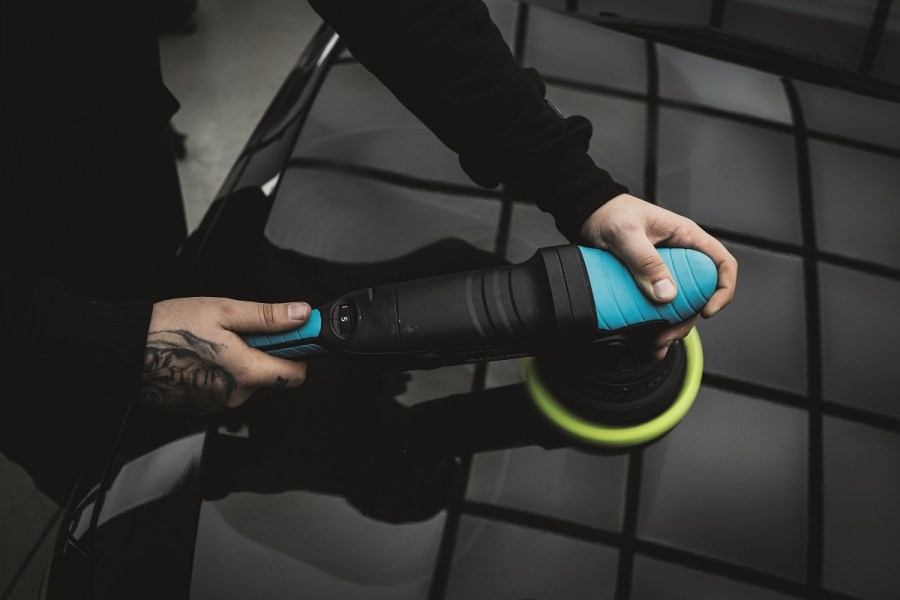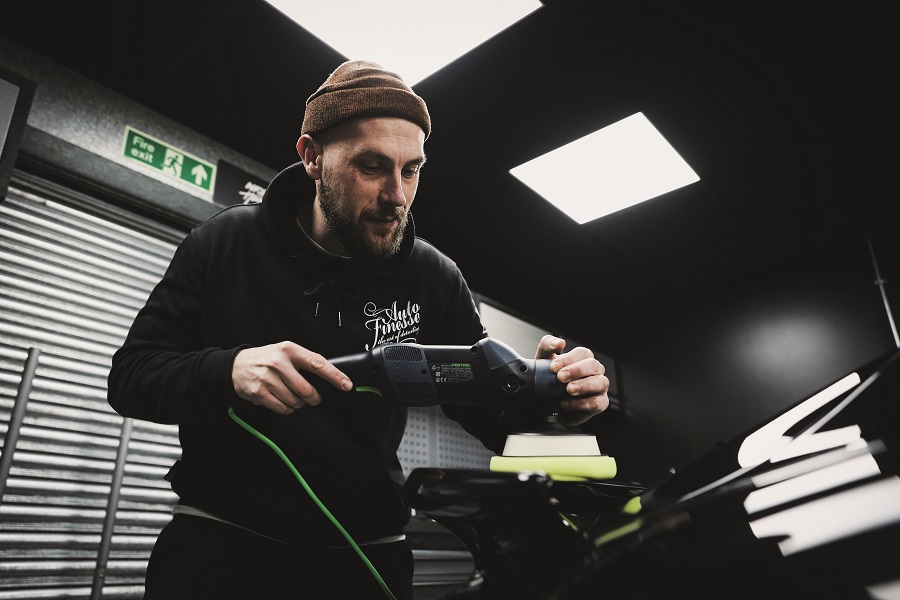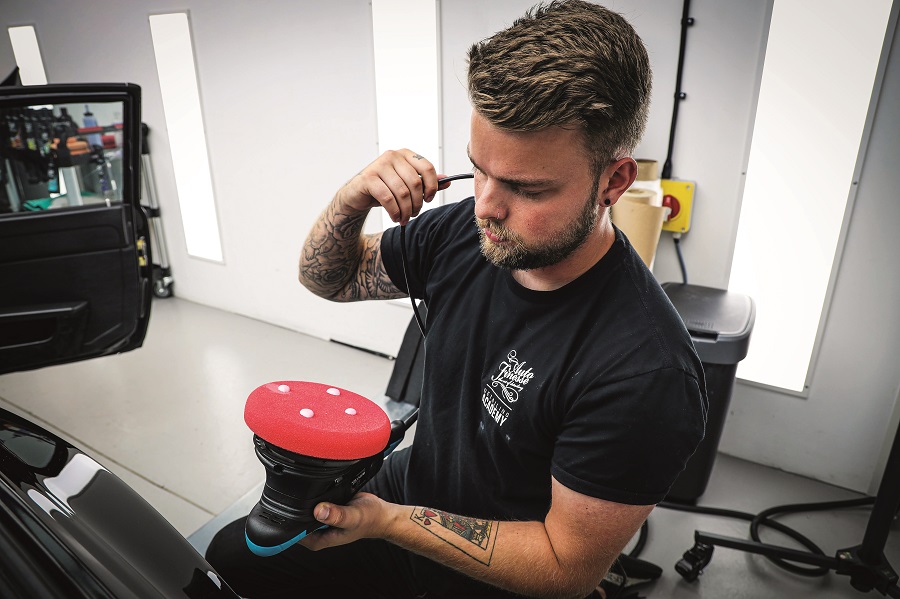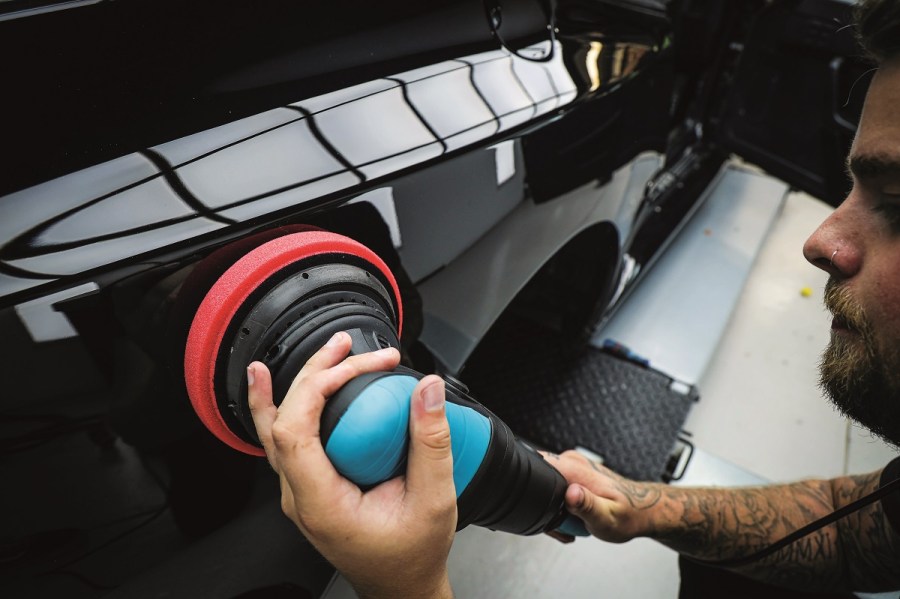Ever wondered about the differences between a rotary vs dual action machine buffer? Here’s all you need to know.
When polishing a car, most detailers would agree that using a machine buffer is the more favorable way of completing the task. Sure, you can certainly polish a car by hand, but it’s often slower and definitely harder work. As such, if you’re keen to keep on top of your car’s appearance, we recommend biting the bullet and spending a bit more to land yourself a machine buffer. However, it’ll surprise some people to learn that there are actually different types of machine buffer. So, if you’re wondering which variation is right for you, this article will hopefully set you on the right track.

What is a Dual Action Buffer?
You might here dual action machine buffers also referred to as random orbital buffers, the latter name giving a bit more of a clue as to how they operate. Essentially, a dual action buffer oscillates in a multitude of circular motions at different angles, mimicking the sort of random performance you’d expect from a human wrist. As such, dual action buffer pads often look as though they’re wobbling rather than rotating in a uniform manner.

What is a Rotary Buffer?
A rotary buffer is a bit more specialist, despite being simpler in the way it operates. Rather than oscillating, a rotary buffer spins its pad on a static axis in uniform circular movements, and only ever in one direction. The speed of that rotation, however, is variable.

Types of machine buffer pad
Microfiber pads and foam pads are by far the most common types of machine buffer pad tat you’ll find used on cars. Foam pads are the entry-level option as they’re the least abrasive. That means they have more margin for error and are less likely to leave new paint defects behind in their wake. As a result, novice detailers will usually start out with a dual action buffer fitted with foam pads. To be even more helpful, most manufacturers color-code foam pads to reflect their level of abrasion.
Microfiber pads are a step up from foam pads in terms of effectiveness. They offer a more potent form of abrasion but are still relatively forgiving, so if you’ve got harsher scratches to deal with, you might want to opt for some of these rather than foam pads.
Finally, wool pads aren’t frequently seen in the DIY car detailing scene because they’re pretty hardcore in the grand scheme of things. They offer far greater abrasive properties than either of the other two pad types mentioned above. That makes them great for levelling out deep scratches, but realistically, it’s probably best if you leave the wool pads to the pro detailers.
Rotary vs Dual Action Machine Buffer – which is best?
Effectiveness
If you’ve got fairly deep scratches and swirls that you want to tackle, your best bet is a rotary buffer. This is due to the more concentrated application of polish that you get from a static axis of rotation. It’s recommended that you follow this up with a wax or sealant coating to help protect the newly-vulnerable paintwork. To be honest, a post-polish finishing treatment is always recommended regardless, but even more so when you’re using a rotary buffer to tackle hard scratches.
On the other hand, if your car is only suffering from fairly minor visual defects, a dual action buffer will be perfectly suitable for the task, and often more effective than the old handheld microfiber cloth technique.
Risk Involved
If you’re a relative novice when it comes to car detailing, we’d generally advise against starting with a rotary buffer. The simple reason for that is that there’s less margin for error. If you concentrate on a segment of body panel for too long, you could end p penetrating through too much of the clearcoat and thus causing damage. By contrast, it’s pretty hard to get things wrong in that way with a dual action buffer. For one, the oscillations help to ensure that no one area of metalwork is receiving all the attention. Plus, the structural design of dual action machine buffers means that when you apply excess pressure to them, they’ll slow down their rotational speed. This makes it harder to damage paintwork through exercising too much pressure upon the buffer when polishing a panel.
Verdict
The best way we can sum it up is this: if you’re a newcomer to the world of detailing, it’s best to start off with a dual action machine buffer as it’ll allow you to learn the art of polishing bodywork properly, with less risk of damage. However, if you’re already experienced in detailing circles, a rotary machine buffer will be of great use when tackling tougher swirls and scratches.





